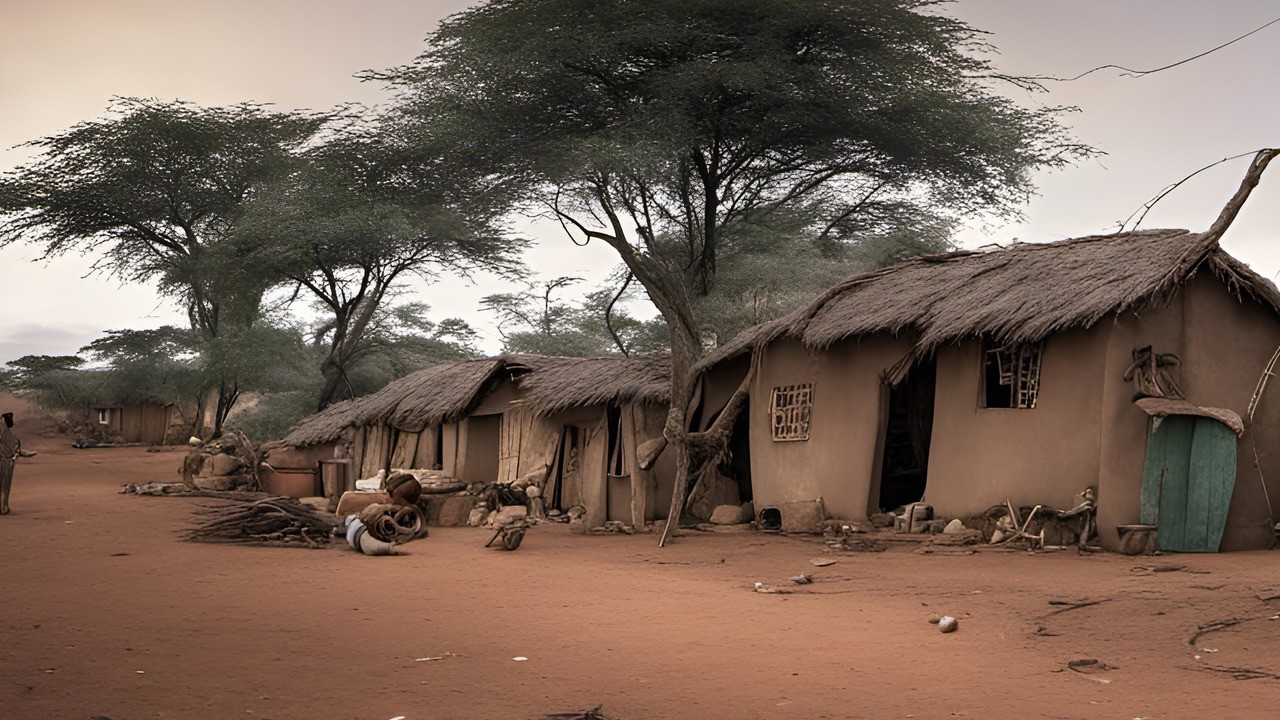Providing electricity access to remote and rural communities continues to be an immense challenge worldwide. According to the International Energy Agency1 (IEA), around 775 million people still lack access to electricity globally, with the majority concentrated in rural areas of developing countries. Bridging this electricity access gap and powering rural development is crucial for improving socio-economic conditions and quality of life.
The Significance of Rural Electrification
Electrification can be transformative for rural communities. Access to electricity enables better healthcare from vaccine refrigeration to medical equipment operation. It allows students to study at night under bright lights and power up laptops and devices. Electricity also unlocks new income generation opportunities from agricultural processing to handicrafts production using powered machinery. Overall, electricity access promotes digital connectivity, productivity, and standards of living.
However, extending the grid to remote villages is an uphill task. Challenges range from sparse populations spread across vast terrains to lack of infrastructure such as roads. Harsh weather conditions, limited technical capacity, and inadequate financial resources also impede conventional grid expansion. Fortunately, innovative approaches are now overcoming these barriers.
The Challenges of Rural Electrification
Rural electrification poses unique challenges not faced in grid extension to urban areas. These include:
- Geographical Barriers
Remote villages are often located far from the existing grid, spread across hills, forests, deserts and other harsh terrains. The costs of extending transmission lines over such vast distances is prohibitively high. Building power plants and grid infrastructure in inaccessible areas also proves challenging. - Low Density of Demand
Sparsely populated villages imply fewer consumers over larger areas. The low density of electricity demand may not justify heavy investments in large-scale electrification projects. - Limited Technical Expertise
Skilled personnel are required for designing, constructing and maintaining electrical systems and equipment. Remote villages typically lack access to such technical expertise. - Financial Constraints
The high upfront costs of electrification projects, lack of access to credit, and limited ability of rural consumers to pay for electricity hampers the financing of rural grid extension. - Policy and Regulation Gaps
Absence of targeted policies, incentives and streamlined regulatory frameworks discourage investments in rural electrification and hinder progress. - Limited Productive Uses
Without electricity access, rural economic activities remain rudimentary. But setting up electricity alone does not guarantee its productive use. Suitable appliances, capacity building, and enabling infrastructure need to co-evolve. - Maintenance Challenges
Once installed, systems require timely maintenance and performance monitoring. This is difficult to sustain in isolated areas with lack of technical skills and infrastructure.

(symbol image, credit CLOU)
Off-Grid and Micro-Grid as Solutions
Off-grid and micro-grid solutions are distributive renewable energy systems tailored for remote locations. Micro-grids typically involve village-level solar, wind, or hybrid systems with local distribution networks. Meanwhile, standalone home solar systems provide basic household lighting and power needs. These systems are modular and expandable to match growing demands.
Being independent of the main grid, such solutions circumvent geographical barriers at a fraction of the cost. Pay-as-you-go financing models also make systems affordable through flexible payment structures. With minimal maintenance needs, off-grid solutions leverage local capacity for sustainability. Overall, distributive renewable systems present a fast and flexible approach to rural electrification.
Key Features and Benefits
Off-grid and micro-grid systems offer the following features:
- Modular and scalable
– capacity can be gradually increased to match demand - Cost-effective
– avoid expensive grid extension - Renewable energy
– uses solar, wind, biomass etc. with low operating costs - Energy efficient
– maximizes utilization of limited generation - Local generation and distribution
– reduces transmission losses - Mobile payments
– enables innovative consumer financing - Quick and easy installation
– speeds up electrification - Needs-based power supply
– provides basic services rather than 24×7 supply
By providing decentralized clean energy access, such solutions can:
- Accelerate electricity access compared to prolonged grid extension
- Empower communities to become producers as well as consumers of electricity
- Enable affordable pay-as-you-go models through mobile money payment systems
- Leverage and develop local skills for installation, operation and maintenance
- Allow focusing first on basic needs before increasing capacity over time
- Offer an environmentally sustainable approach to expanding energy access
Within mini-grids, microgrids are even smaller-scale grids powering local buildings or clusters such as schools, hospitals or administrative offices. They can either operate independently or interconnect with the main mini-grid.
Overall, off-grid solutions are scalable, flexible, cost-effective and sustainable in matching electrification to rural realities.
Technology Choices
Several technology configurations can power off-grid projects:
- Solar mini-grids
Photovoltaic (PV) panels convert solar irradiation directly into electricity for distribution through the mini-grid network to homes and businesses. Battery storage enables power supply during non-daylight hours. Solar mini-grids are modular, easy to install and low maintenance. - Wind mini-grids
Wind turbine generators harness the kinetic energy of wind to generate electricity. Wind-solar hybrids combine the reliability of solar with high energy generation during windy periods. - Biomass gasifiers
Using agricultural residues, wood chips or bio-waste as feedstock, biomass gasification generates a combustible gas for powering mini-grid generators. This provides clean energy while also processing local waste. - Diesel/hybrid mini-grids
Diesel generators offer reliable backup for renewable mini-grids in case of low solar or wind energy. Solar-diesel hybrids minimize fuel costs by maximizing solar contribution. - Pico-hydro mini-grids
Small hydropower units convert the energy of flowing water from streams or rivers into electricity through microturbines. This harnesses local mini-hydro resources. - Standalone systems
Individual home solar systems typically consist of a photovoltaic module, battery, charge controller and basic loads such as lights and phone chargers. Larger systems can also power TVs, fans, refrigerators etc.
The choice of technology depends on the local resource availability, production and consumption patterns, and long-term expandability requirements. On-site assessment helps determine the most suitable technology or hybrid combination for each context.
Innovative Financing Models
Limited consumer financing and investor confidence have long hindered off-grid market growth. However, innovative models are now enhancing affordability and profitability:
- Pay-as-you-go (PAYG)
Consumers make small regular mobile money payments rather than a large upfront cost. The systems get disabled if payment is not made. This model shifts the economic burden while also enabling credit assessment. - Energy-as-a-service
The service provider owns the system and charges a monthly fee for the service provided, thus eliminating consumer investment. This also incentivizes high service quality. - Microfinance
Customers can acquire systems through microloans provided by rural banks and microfinance institutions, allowing incremental repayment. - Crowdfunding
Pooling capital from multiple online investors helps raise funds for larger community-based projects. - Carbon financing
The carbon offsets generated from clean energy projects create carbon credits that can be traded on international markets to provide additional revenue.
Such models enhance the commercial viability of off-grid projects. They also make modern energy services affordable for rural households previously dependent on polluting alternatives like kerosene.
Partnerships and Community Engagement
A collaborative approach between communities, government, financial institutions and technology providers is key to successful and sustainable projects. Communities should be active stakeholders rather than just technology recipients. This builds ownership while also drawing on local knowledge. At the same time, public and private sector partnerships can harmonize public policy with private sector innovation.
Governments help streamline permitting, quality standards, and regulations for off-grid systems while providing targeted subsidies for upfront capital costs. Private companies bring in technical expertise, operating efficiency, and flexible financing mechanisms. Communities then oversee local operations, maintenance and revenue collection.
Financial institutions also have a crucial role in creating innovative investment mechanisms and consumer financing models tailored for the rural context. Partnerships between banks, microfinance institutions, cooperative societies and mobile money providers are evolving to cater to the unique rural energy market.
Furthermore, strong community institutions and local capacity building enable long-term project viability. Local youth should be equipped with the skills to operate and maintain systems through vocational training programs. Women are engaged as entrepreneurs for managing local energy kiosks and payment collection. Such local jobs also provide livelihood opportunities to educated-but-unemployed rural youth. Overall, participative project development and implementation unlocks community ingenuity.
Takeaway
Rural electrification is a complex undertaking with immense rewards. While challenges persist, the innovation emerging across technologies, business models and regulations provides optimism. With supportive policies and community-centric solutions, electricity access can reach even the most remote last mile households and empower rural communities worldwide. The path ahead will only be brighter.
If you are interested in our off-grid or microgrid solutions, don't hesitate to contact us. Our experts are ready to assess your needs and design customized renewable energy systems to electrify your rural community.
References
- International Energy Agency, Nov. 2022 ↩︎
Editor's note: This article was originally published in September 2023 and has been updated for comprehensiveness.





All comments are moderated before being published. Inappropriate or off-topic comments may not be approved.